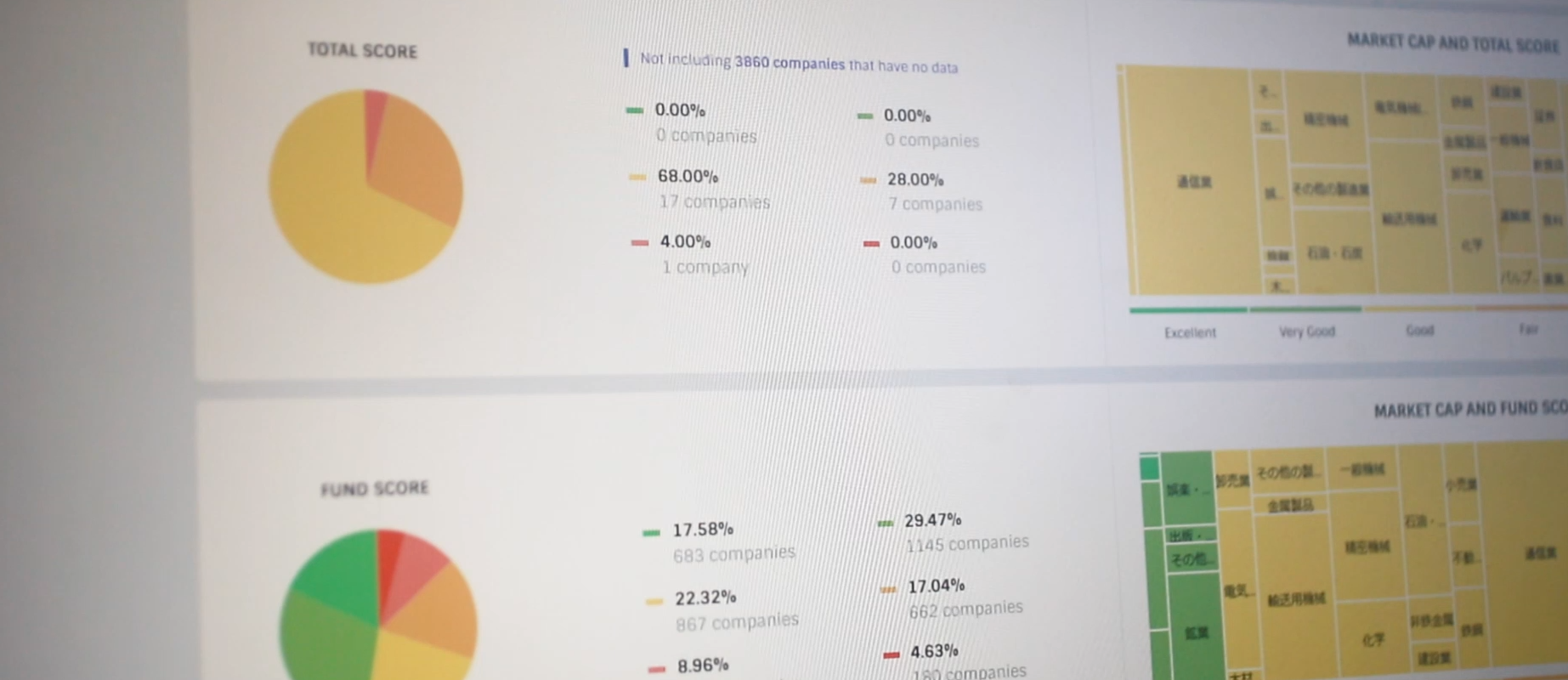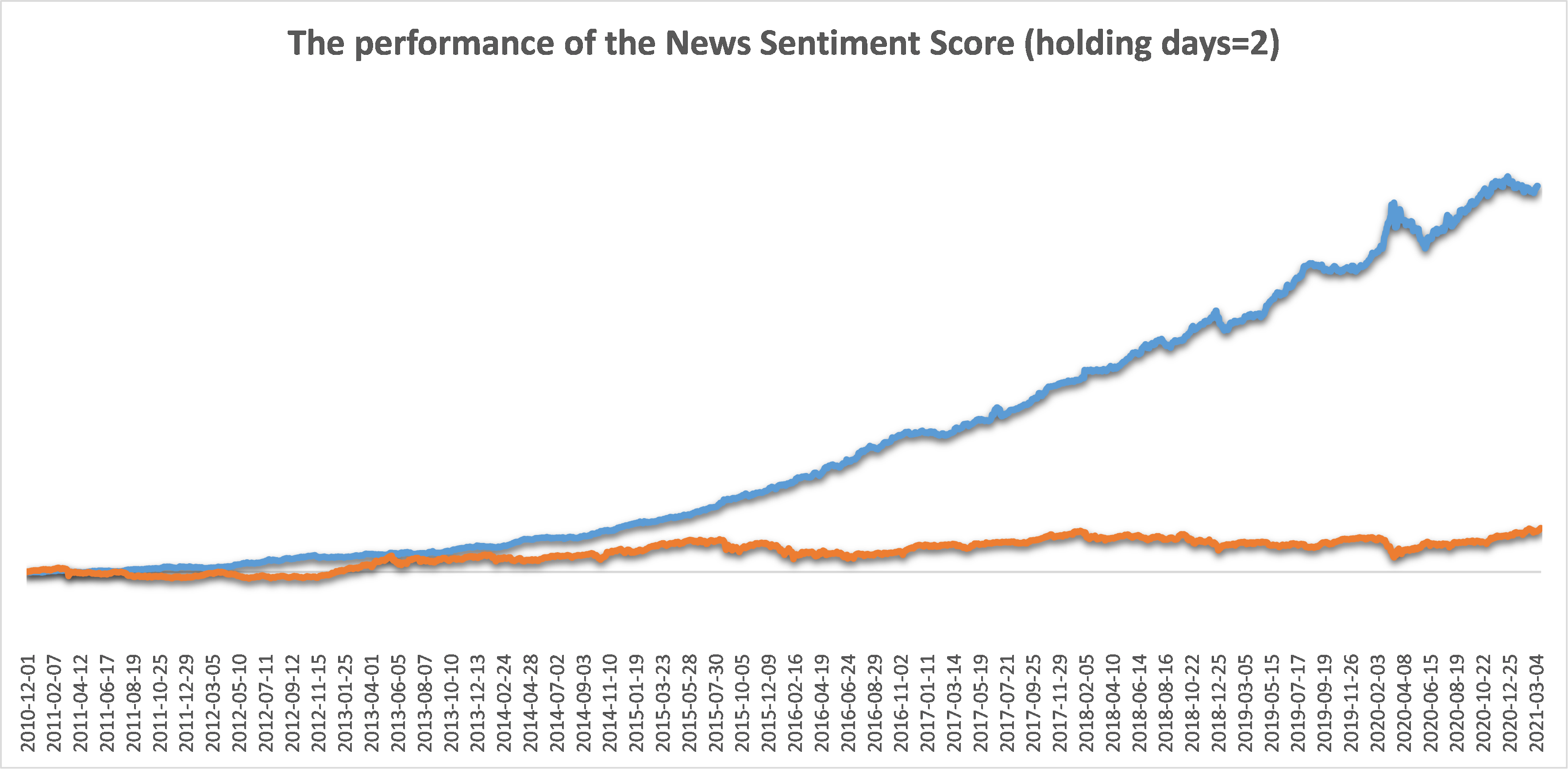- Alternative Data
- Business Solution
- Market Data Approach
SMACOM's unique "News Sentiment Score"

In March 2021, Nikkei Financial Technology Research Institute (hereinafter "Nikkei FTRI") began offering services for the new SMACOM information distribution platform, which provides corporate analytical information (https://www.nikkei.co.jp/nikkeiinfo/en/global_services/nikkei-ftri/providing-services-for-the-new-smacom-information-distribution-platform.html). SMACOM makes valuable information available to support the decision-making processes of leading financial market professionals. It evaluates more than 40,000 companies in 51 major economies using the sophisticated technologies and unique analytical skills that characterize Nikkei FTRI.
In this article, I would like to explain the News Sentiment Score*, which is one of the metrics delivered by SMACOM.
SMACOM's News Sentiment Score is the result of an analysis of sentiment in Japanese news. The score indicates whether the news on a company's performance is positive, negative, or neutral. As a result, a deep understanding of the Japanese language is not necessary to use it, and it can be easily employed by overseas hedge funds whose first language is not Japanese.
The news itself is based on information sources from Nikkei Inc. and QUICK Corp. It is not a mere scraping of unqualified sources or headline-only news. The text analysis is based on quality-certified news sources, using the natural language processing methods that Nikkei FTRI has accumulated over the years. Specifically, ALBERT, a type of deep learning, is used for pre-training, and a neural network determines whether the news is positive, negative, or neutral. Then, a score from 1 to 100 is assigned to each news item.
The following graph shows the performance of a portfolio with a score of 70 points or higher designated "long," and a portfolio with a score of 30 points or lower designated "short," measured two days later, using data from previous years from 2011 to 2021. As you can see from the graph, the News Sentiment score (blue line) outperformed TOPIX (orange line) in the short term as well, indicating that it is a very effective score over the short term.

For more precise news analysis results, we recommend QUICK News Analysis. QUICK News Analysis provides various types of news sentiment scores covering both the long and short terms. The first is the "Quantitative Score" for the short term. The Quantitative Score is based on events and categories created by our company, and it uses the SVM (Support Vector Machine) to maximize the performance for the short term. The second is the "Qualitative Score." The Qualitative Score maximizes the performance for the medium term based on human-created rules. Since it uses rules created by people, the score is relatively easy to interpret and understand. The final score is the "Sentiment Score Expert," which uses multiple deep learning methods for the long term. The Sentiment Score Expert is calculated from a model built by our researchers based on the teacher data from reading each news item and classifying the impact of the news on the company's future performance as positive, negative, or neutral. The scores are calculated using ALBERT and neural networks, which are relatively new machine learning methods. You can decide which score to use depending on your investment objectives and targets.
We can provide a free trial, so if you are interested, please contact us.
https://www.ftri.co.jp/eng/index.html#company
* The news sentiment score displayed on SMACOM is an output based on QUICK news analysis, and its use on SMACOM is subject to approval by QUICK.
Disclaimer (PDF file):
https://www.ftri.co.jp/eng/pdf/SMACOM_Disclaimer-EN.pdf
Nikkei FTRI

Nikkei FTRI is a member of the Nikkei Group that works with data analysis technology. We are recognized for the high quality of our analytical and modeling techniques, which utilize both traditional and alternative varieties of data.
See More
